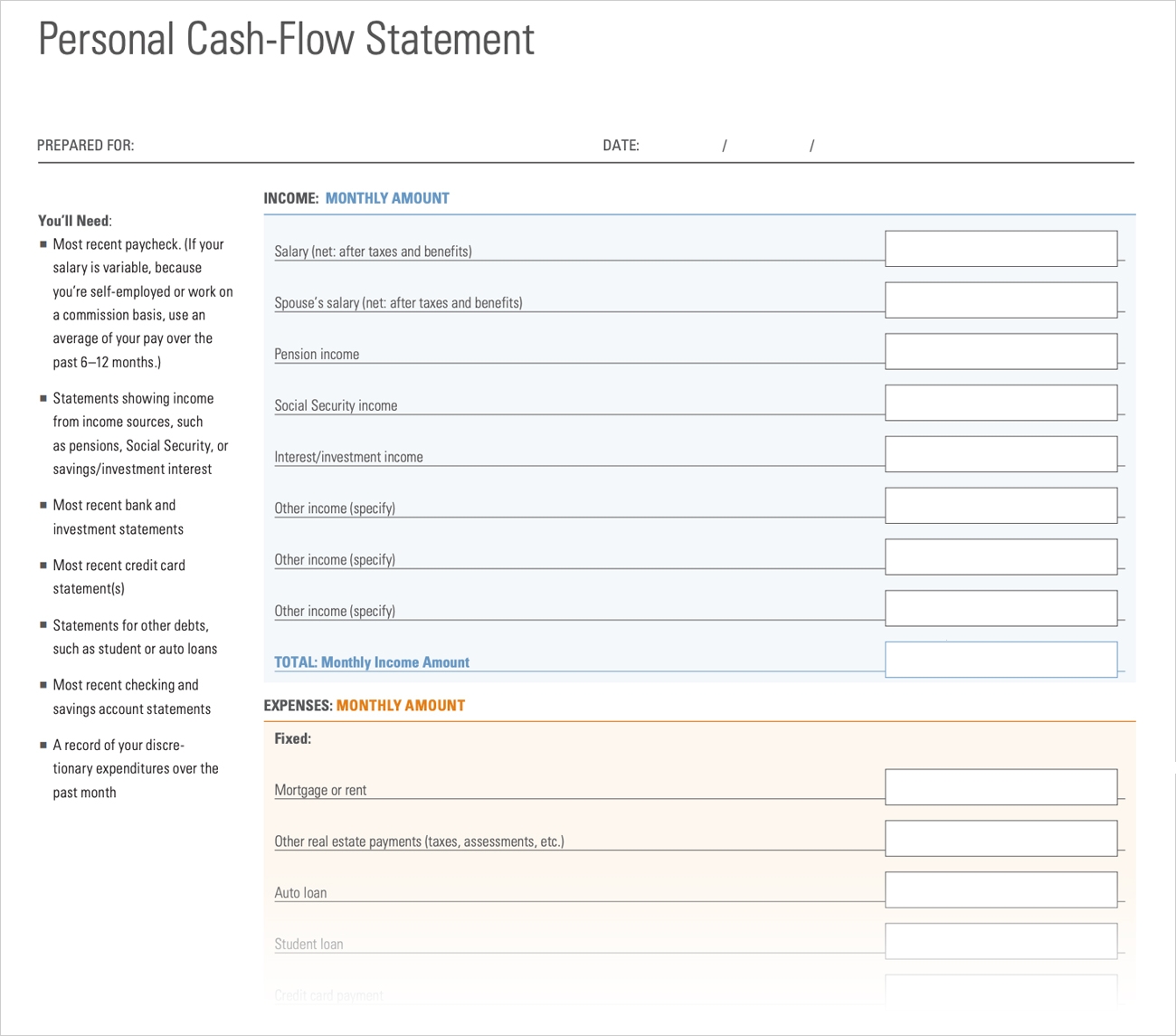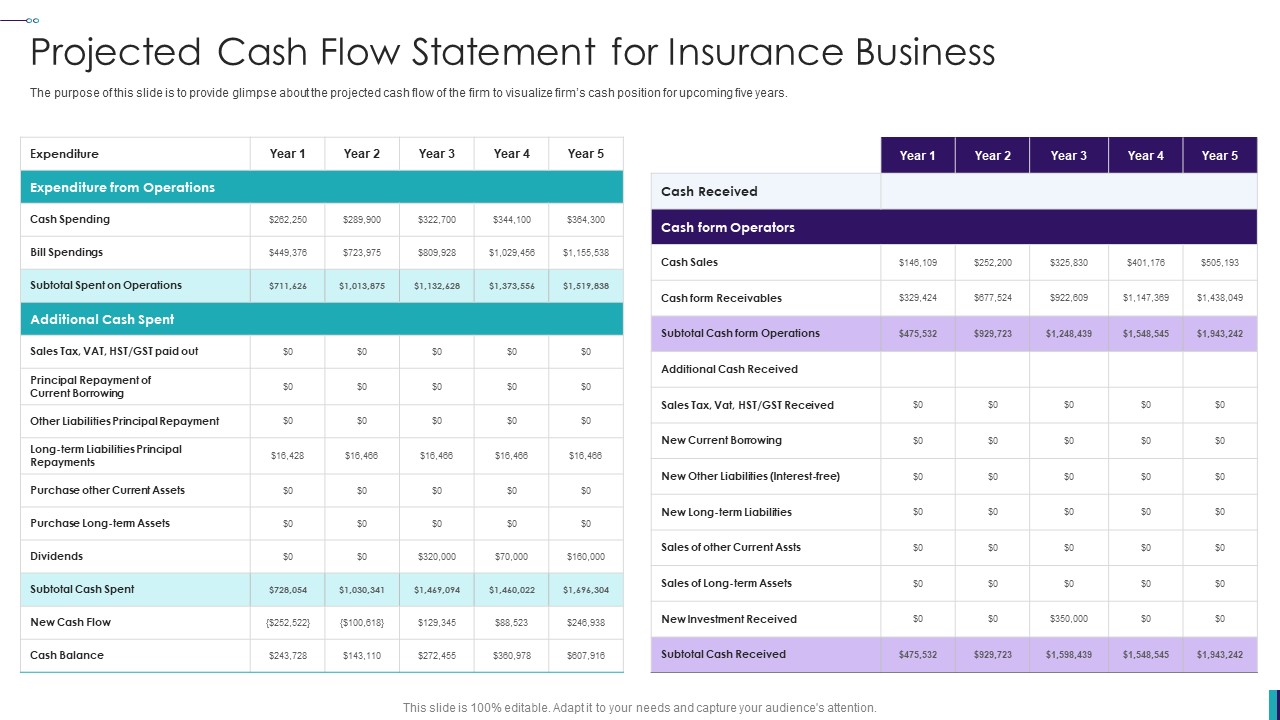

Finance
What Is The Net Cash Flow
Modified: February 21, 2024
Discover the importance of net cash flow in finance and how it impacts your financial health. Learn how to calculate and optimize your cash flow for a successful financial future.
(Many of the links in this article redirect to a specific reviewed product. Your purchase of these products through affiliate links helps to generate commission for LiveWell, at no extra cost. Learn more)
Table of Contents
Introduction
The concept of net cash flow is an integral part of financial analysis and plays a crucial role in assessing the financial health of a business or individual. It serves as a key indicator of a company’s ability to generate and manage cash over a specific period of time. By understanding and analyzing the net cash flow, investors, lenders, and business owners can make informed decisions regarding investment opportunities, budgeting, and overall financial planning.
Net cash flow refers to the difference between the cash inflows and outflows within a given period. It provides a clear picture of the actual cash position, taking into account factors such as revenue, expenses, investments, and debt repayments. A positive net cash flow indicates that a company has more cash coming in than going out, while a negative net cash flow suggests a situation where more cash is going out than coming in.
Understanding net cash flow is important as it helps in evaluating the solvency, liquidity, and profitability of a business. It provides insights into whether a company is generating enough cash to cover its operational and financial obligations, as well as its ability to invest in growth opportunities. In personal finance, net cash flow analysis helps individuals and households assess their financial stability, manage their expenses, and plan for future financial goals.
Net cash flow serves as a valuable metric for financial decision-making. It helps businesses and individuals determine their cash requirements, make informed investment choices, and develop effective cash management strategies. By closely monitoring and analyzing net cash flow, businesses can identify areas for improvement, reduce unnecessary expenses, and ensure that they have sufficient cash reserves to cover unforeseen events or economic downturns.
In the next section, we will delve deeper into the definition of net cash flow and explore its components and calculations. Understanding the intricacies of net cash flow will enable us to grasp its significance in financial analysis and decision-making processes.
Definition of Net Cash Flow
Net cash flow is a financial metric that reflects the difference between cash received and cash paid out during a specific period of time. It measures the inflow and outflow of cash from operating activities, investing activities, and financing activities. Net cash flow is commonly used to assess the cash position and financial performance of a business or individual.
There are three primary categories of cash flows that contribute to the calculation of net cash flow:
- Operating activities: This category includes cash flows from the day-to-day operations of a business. It encompasses cash received from sales, interest income, and other operating revenues, as well as cash payments for expenses, salaries, taxes, and other operational costs. Positive cash flows from operating activities indicate that a business is generating sufficient cash internally to cover its expenses.
- Investing activities: This category includes cash flows related to the acquisition or sale of long-term assets, such as property, plant, and equipment (PP&E), investments, and other assets not directly involved in daily operations. Cash inflows from investing activities may include proceeds from the sale of assets or investments, while cash outflows may include capital expenditures or investments in other businesses.
- Financing activities: This category includes cash flows associated with raising capital through debt or equity financing, as well as repayments of debt or distributions to shareholders. Cash inflows from financing activities can include proceeds from issuing stocks or bonds, while cash outflows may include loan repayments or dividend payments.
To calculate net cash flow, the cash inflows and outflows from each category are summed up and then netted against each other. The resulting figure represents the net change in cash position over a specific period of time.
A positive net cash flow indicates that more cash is coming into the business or individual than going out, suggesting the ability to meet financial obligations and potentially invest in growth opportunities. Conversely, a negative net cash flow indicates that more cash is going out than coming in, signaling potential financial strain or the need for external funding.
It is important to note that net cash flow is different from net income or profit. Net income represents the total revenue minus expenses, including non-cash items such as depreciation and amortization. In contrast, net cash flow focuses specifically on cash transactions, providing a more accurate representation of the actual cash position of a business or individual.
In the next section, we will explore the importance of net cash flow in financial analysis and decision-making.
Importance of Net Cash Flow
Net cash flow plays a critical role in financial analysis and decision-making for businesses and individuals. It provides valuable insights into the cash position, liquidity, and financial health of an entity. Here are several key reasons why net cash flow is important:
- Assessing Financial Stability: Net cash flow helps evaluate the ability of a business or individual to meet their financial obligations. A positive net cash flow indicates that there is enough cash coming in to cover expenses and debt payments, suggesting a stable financial position. Conversely, a negative net cash flow may indicate a cash crunch and the need for external financing or cost-cutting measures.
- Evaluating Cash Management: Net cash flow analysis allows businesses to assess how effectively they are managing their cash resources. By analyzing the cash inflows and outflows, companies can identify areas where they can improve cash collection, minimize unnecessary expenses, and optimize working capital management. This helps ensure sufficient cash reserves for operational needs and strategic investments.
- Investment Decisions: Net cash flow is an important consideration when making investment decisions. It helps assess the viability and profitability of potential investments by evaluating the expected returns and the associated cash flows. Investors look for positive net cash flow from investments, as it indicates the ability to generate returns and provide a steady stream of cash inflows.
- Budgeting and Financial Planning: Net cash flow analysis is crucial for effective budgeting and financial planning. By understanding the cash inflows and outflows, businesses and individuals can create realistic budgets, set financial goals, and make informed decisions regarding spending, savings, and debt management. Net cash flow projections also help anticipate and prepare for future cash needs and potential shortfalls.
- Detecting Financial Trends: Monitoring net cash flow over time helps identify financial trends and patterns. Positive or increasing net cash flow indicates improving financial performance and potential growth opportunities. On the other hand, a declining or negative net cash flow may signal financial challenges, requiring corrective actions to ensure financial sustainability.
Net cash flow provides a comprehensive view of an entity’s cash position and financial performance, enabling stakeholders to make informed decisions regarding investments, financing, and cash management. It helps identify areas of strength and weakness, allowing for strategic adjustments and improvements. By understanding and analyzing net cash flow, businesses and individuals can ensure a solid financial foundation and position themselves for long-term success.
In the next section, we will explore the components involved in calculating net cash flow.
Components of Net Cash Flow
The calculation of net cash flow involves analyzing the cash inflows and outflows from various activities. These cash flows are grouped into three main components: operating activities, investing activities, and financing activities. Each component provides insight into different aspects of an entity’s financial activities. Let’s take a closer look at each component:
- Operating Activities: Cash flows from operating activities are related to a company’s core business operations. This component includes cash received from sales, interest income, dividends received, and other revenue-generating activities. It also includes cash payments for operating expenses, salaries, taxes, and other costs associated with running the business. Positive cash flows from operating activities indicate that the business is generating sufficient cash to cover its day-to-day expenses.
- Investing Activities: Cash flows from investing activities involve the acquisition or sale of long-term assets and investments. This component includes cash inflows from the sale of property, plant, and equipment (PP&E), as well as cash received from the sale of investments or other financial assets. Cash outflows from investing activities consist of cash payments for the purchase of PP&E, investments in other companies, and the acquisition of intangible assets. Investing activities are an important indicator of a company’s capital expenditure and its investment in long-term growth opportunities.
- Financing Activities: Cash flows from financing activities are associated with how a company raises and repays capital. This component includes cash inflows from issuing stocks or bonds, as well as additional capital contributions from owners. It also includes cash outflows for the repayment of debt, payment of dividends to shareholders, and the reacquisition of company shares. Financing activities give insights into how a company finances its operations and the distribution of funds to shareholders or debt holders.
Calculating net cash flow involves summing up the cash inflows and outflows from these three components and then netting the figures to determine the net change in cash position. A positive net cash flow indicates that more cash is coming in than going out, while a negative net cash flow suggests that more cash is going out than coming in.
Each component of net cash flow provides valuable information about an entity’s financial activities. The operating activities component reflects the cash generated or consumed by its core business operations. The investing activities component highlights the cash flows related to investments in assets or other companies. The financing activities component focuses on how the entity raises capital to support its operations and activities.
By analyzing the components of net cash flow, stakeholders can gain insights into the sources and uses of cash, identifying areas of financial strength and potential risks. This information is useful for evaluating the financial performance, liquidity, and sustainability of a business or individual.
In the next section, we will explore how to calculate net cash flow using the information from these components.
Calculation of Net Cash Flow
The calculation of net cash flow involves analyzing the cash inflows and outflows from the operating, investing, and financing activities of a business or individual. By determining the net change in cash position, we can assess the overall cash flow situation. Here is a step-by-step process to calculate net cash flow:
- Operating Activities: Start by identifying the cash inflows from operating activities. This includes cash received from sales, interest income, dividends, and other revenue sources. Sum up these cash inflows.
- Operating Activities: Next, determine the cash outflows from operating activities. This includes payments for operating expenses, salaries, taxes, and other costs incurred in running the business. Sum up these cash outflows.
- Investing Activities: Identify the cash inflows from investing activities. This includes cash received from the sale of assets, investments, or other financial instruments. Sum up these cash inflows.
- Investing Activities: Determine the cash outflows from investing activities. This includes cash payments for the purchase of assets, investments, or other financial instruments. Sum up these cash outflows.
- Financing Activities: Identify the cash inflows from financing activities. This includes cash received from issuing stocks or bonds or from additional contributions by owners. Sum up these cash inflows.
- Financing Activities: Determine the cash outflows from financing activities. This includes cash payments for debt repayments, dividend payments, or the repurchase of company shares. Sum up these cash outflows.
- Net Cash Flow: Finally, subtract the total cash outflows (operating activities + investing activities + financing activities) from the total cash inflows (operating activities + investing activities + financing activities). The result represents the net cash flow.
If the net cash flow is positive, it indicates that more cash is coming into the entity than going out. This suggests a healthy cash flow situation, where the entity has a surplus of cash to cover expenses and potentially invest in growth opportunities. On the other hand, if the net cash flow is negative, it suggests that more cash is going out than coming in. This may signify a need for external financing or cost-cutting measures to manage the cash flow deficit.
Calculating net cash flow provides valuable insights into the overall cash flow position of a business or individual. It helps in assessing the financial health, liquidity, and ability to meet financial obligations. By closely monitoring net cash flow, stakeholders can make informed decisions regarding cash management, budgeting, and financial planning.
In the next section, we will discuss the interpretation of net cash flow and how it can be used in financial analysis.
Interpretation of Net Cash Flow
The interpretation of net cash flow requires a thorough understanding of the financial context and the specific circumstances surrounding the entity in question. Net cash flow serves as a valuable metric to evaluate the cash position, financial stability, and performance of a business or individual. Here are key factors to consider when interpreting net cash flow:
- Positive Net Cash Flow: A positive net cash flow indicates that the entity has generated more cash inflows than outflows during the specified period. This suggests a healthy cash position and the ability to cover expenses, debt repayments, and potentially invest in growth opportunities. A consistently positive net cash flow is typically seen as a positive indicator of financial health.
- Negative Net Cash Flow: A negative net cash flow means that the entity has more cash outflows than inflows during the specified period. It may be a sign of financial strain, indicating a potential inability to meet financial obligations or a need for external financing. A consistently negative net cash flow may raise concerns about financial sustainability.
- Operating Cash Flow: Analyzing the operating cash flow component within net cash flow provides insights into the cash generated or consumed by the entity’s core business operations. A positive operating cash flow indicates that the core operations are generating sufficient cash to cover expenses and potentially fund future growth. A negative operating cash flow may suggest operational inefficiencies or challenges in generating cash from day-to-day activities.
- Investing and Financing Activities: Evaluating the cash flows from investing and financing activities provides insights into the entity’s investment decisions and financing strategies. Positive cash flows from investing activities may indicate successful asset sales or prudent investment decisions. Positive cash flows from financing activities may indicate successful capital raising or additional support from owners. Negative cash flows from investing or financing activities may indicate heavy investments or debt repayments.
- Trends and Comparisons: Assessing net cash flow over multiple periods or comparing it with industry benchmarks and competitors can provide further insights. Positive or increasing net cash flow over time may indicate improving financial performance and potential growth opportunities. Declining or negative net cash flow may signal challenges or the need for corrective actions.
Interpreting net cash flow requires careful analysis and consideration of the entity’s specific circumstances, industry dynamics, and strategic goals. It is essential to take into account any one-time or non-recurring cash flows that may distort the overall picture. Additionally, it is crucial to consider the net cash flow as part of a comprehensive financial analysis, incorporating other financial metrics, profitability measures, and risk assessments.
By understanding and interpreting net cash flow, stakeholders can make informed decisions regarding financial management, investment strategies, and resource allocation. It provides insights into the entity’s ability to generate and manage cash, supporting effective financial planning and decision-making.
In the next section, we will explore the factors that can affect net cash flow and how they impact the overall financial position.
Factors Affecting Net Cash Flow
Net cash flow can be influenced by a variety of factors, both internal and external, that impact the cash inflows and outflows of a business or individual. Understanding these factors is crucial for assessing the overall financial position and cash flow management. Here are key factors that can affect net cash flow:
- Revenue and Sales Volume: The level of revenue and the volume of sales directly impact cash inflows from operating activities. Higher sales can result in increased cash inflows, while lower sales can lead to decreased cash inflows. It is important to analyze revenue sources and their contribution to cash flow.
- Operating Expenses: Controlling and managing operating expenses is crucial for maintaining a positive net cash flow. Higher expenses can lead to increased cash outflows, reducing the overall cash flow. Analyzing and optimizing expenses can help improve net cash flow.
- Accounts Receivable and Accounts Payable: The timing of cash receipts from customers and cash payments to suppliers can significantly impact net cash flow. Delays in collecting accounts receivables or extending payment terms to suppliers can affect the cash inflows and outflows, leading to potential cash flow challenges.
- Inventory Management: Efficient inventory management is essential for controlling cash outflows. Holding excessive inventory ties up cash, while insufficient inventory levels may lead to missed sales opportunities. Striking the right balance in inventory management helps optimize net cash flow.
- Capital Expenditures: Investment in capital assets, such as machinery, equipment, or real estate, can impact net cash flow. Cash outflows for capital expenditures reduce available cash, while cash inflows from the sale of assets can improve net cash flow. Managing capital expenditures in line with business needs is critical.
- Debt Service: Interest payments and principal repayments on debt can impact net cash flow. Higher debt service obligations result in increased cash outflows, while refinancing or debt restructuring can help improve net cash flow by reducing interest expenses.
- Seasonality and Business Cycles: Certain industries or businesses may experience seasonal fluctuations in cash inflows and outflows. Understanding the seasonal nature of cash flows and planning accordingly is crucial for maintaining steady net cash flow throughout the year.
- Macroeconomic Factors: Economic conditions, such as inflation, interest rates, or changes in consumer behavior, can affect net cash flow. Unfavorable economic conditions may result in reduced sales and cash inflows, while favorable conditions may boost cash inflows.
These factors are not exhaustive, and each entity may have specific factors unique to its industry, market, or individual circumstances. Analyzing and understanding these factors helps in identifying potential risks and opportunities, and formulating strategies to improve net cash flow.
In the next section, we will provide examples of how net cash flow analysis can be applied in real-life scenarios.
Examples of Net Cash Flow Analysis
Net cash flow analysis is a vital tool for financial decision-making and can be applied across various scenarios. Here are a few examples of how net cash flow analysis can be used:
1. Start-up Business: When starting a new business, net cash flow analysis helps entrepreneurs assess the financial feasibility and sustainability of their venture. By estimating cash inflows from projected sales and cash outflows from operating expenses, investments, and financing activities, entrepreneurs can determine if their business will generate positive net cash flow in the early stages. This analysis helps in budgeting, securing financing, and making informed decisions about resource allocation.
2. Profitability Evaluation: Net cash flow analysis can complement profitability evaluation by providing insights into the actual cash generated or consumed by a business. A company can have positive net income or profit but still face cash flow challenges if there are delays in collecting accounts receivables or excessive capital expenditure. Analyzing net cash flow alongside profitability metrics helps identify areas where cash management can be improved and ensures that profits translate into positive cash flow.
3. Investment Analysis: Investors and financial analysts use net cash flow analysis to evaluate potential investment opportunities. By assessing the projected cash inflows and outflows over the investment period, investors can determine the profitability and risk associated with the investment. Positive net cash flow from the investment indicates the potential for financial returns, while negative net cash flow may indicate high initial costs or longer payback periods.
4. Mergers and Acquisitions: Net cash flow analysis plays a crucial role in assessing the financial viability of mergers and acquisitions. By evaluating the combined cash inflows and outflows of the acquiring and target companies, stakeholders can gauge the impact on net cash flow post-merger. Understanding the cash flow dynamics helps in negotiating the terms, assessing the ability to repay debt, and identifying potential synergies that can lead to improved cash flow.
5. Personal Finance: Net cash flow analysis is also relevant for personal financial planning. Individuals can examine their income sources, expenses, and investments to determine their net cash flow. This analysis helps in budgeting, managing debt, and making decisions about saving and investments. It also provides an overview of the individual’s financial health and helps in achieving short-term and long-term financial goals.
These examples highlight the versatility and applicability of net cash flow analysis in a range of scenarios. By evaluating the cash inflows and outflows, stakeholders can make informed decisions, mitigate risk, and ensure the financial stability and growth of a business or individual.
In the final section, we will summarize the importance of net cash flow and its relevance in financial analysis and decision-making processes.
Conclusion
Net cash flow is a fundamental metric in financial analysis that provides insights into the cash position, liquidity, and financial health of a business or individual. It measures the difference between cash inflows and outflows, taking into account operating activities, investing activities, and financing activities. Understanding net cash flow is crucial for evaluating financial stability, assessing cash management, making investment decisions, and budgeting.
By analyzing net cash flow, stakeholders can assess the ability of a business to generate and manage cash, meet financial obligations, and invest in growth opportunities. A positive net cash flow indicates a healthy cash position, while a negative net cash flow may require adjustments in operations or external financing.
Net cash flow analysis is not limited to businesses; it is also relevant in personal finance. Individuals can assess their income, expenses, and investments to understand their net cash flow and make informed financial decisions.
Factors such as revenue and sales volume, operating expenses, inventory management, debt service, and economic conditions can impact net cash flow. By monitoring these factors and analyzing their impact on cash inflows and outflows, stakeholders can identify risks, opportunities, and areas for improvement.
Net cash flow analysis can be applied in various scenarios, including start-up businesses, profitability evaluation, investment analysis, mergers and acquisitions, and personal financial planning. It helps entrepreneurs assess the financial feasibility of their ventures, investors evaluate potential opportunities, and individuals manage their personal finances effectively.
Ultimately, net cash flow provides a comprehensive view of an entity’s cash position and financial performance. It aids in effective decision-making, resource allocation, and long-term financial planning. By understanding and utilizing net cash flow analysis, businesses and individuals can ensure financial stability, improve cash management, and position themselves for success.














